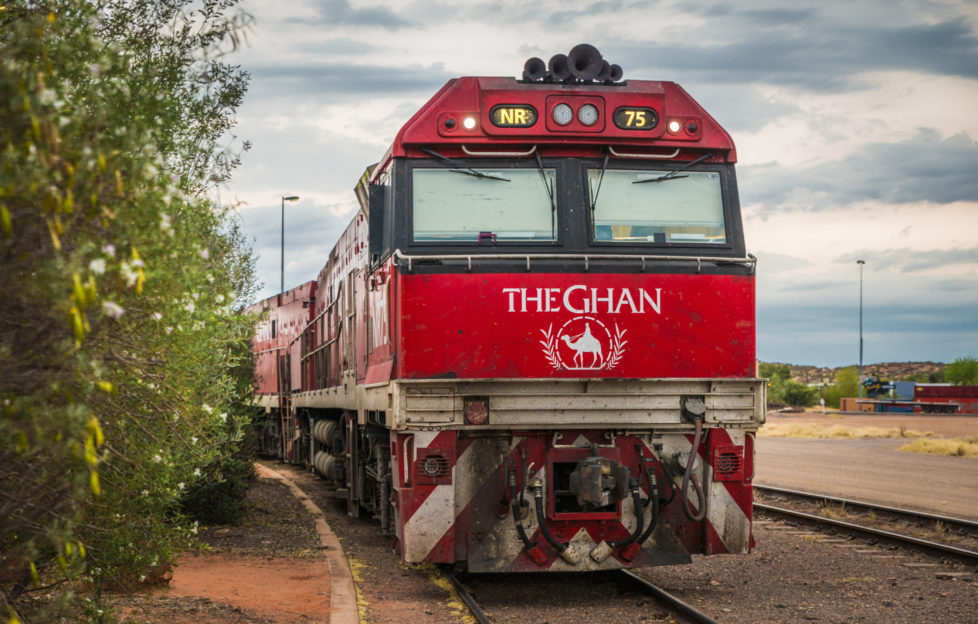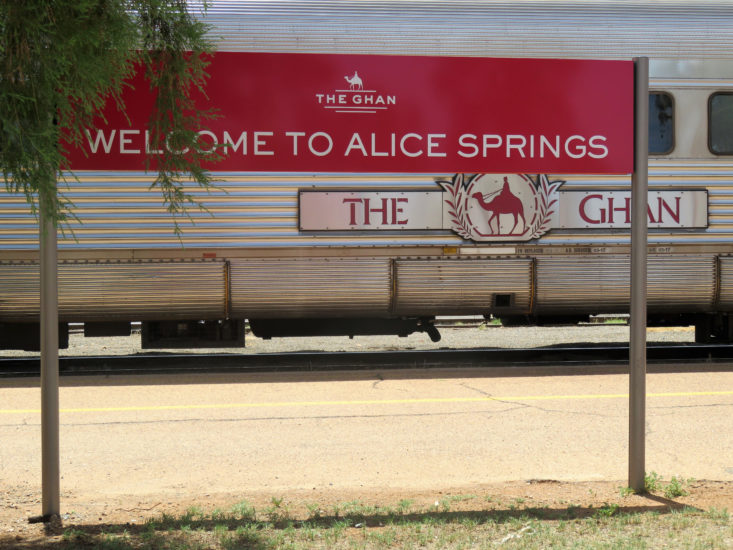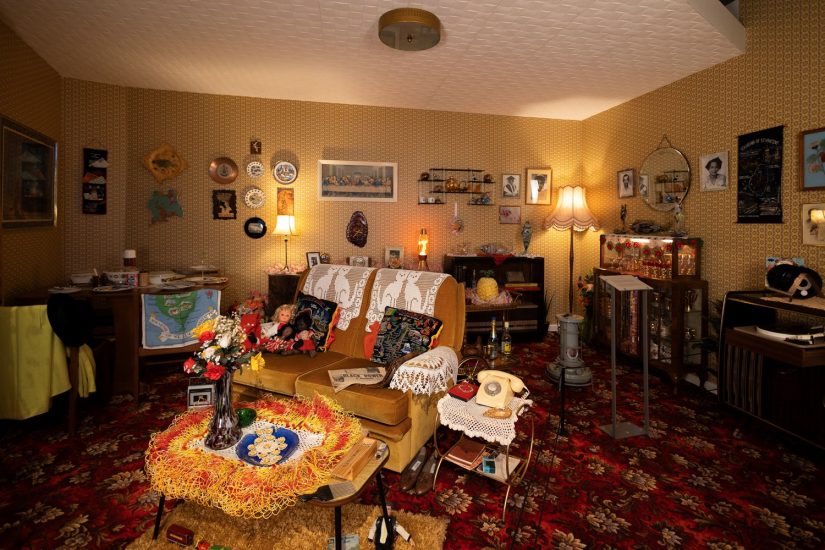Crossing Australia On The Ghan

January 26 is Australia Day.
To help mark the occasion, we’ve decided to revisit this article on the Ghan, the country’s iconic cross-country train.
David Kippen wrote this piece for us on the occasion of the train’s 90th anniversary. We first published it in “The People’s Friend” Special 180.
The iconic Ghan train takes three days and two nights to travel 2,979 kilometres (1,851 miles) from Adelaide, on South Australia’s temperate coast, through the outback and across deserts to Darwin, in the tropical “Top End”.
2020 marks 90 years since the Central Australian Railway, fondly called the Ghan, reached Alice Springs in Australia’s remote centre.
Today’s luxury, air-conditioned train is a far cry from the mixed goods/livestock/passenger trains that crawled along the original narrow-gauge line. Strangely, although the original Ghan ran through hot, arid country, it could be days or weeks late due to flooding.
Intrepid explorers
As intrepid explorers, miners and pastoralists settled Australia’s vast inland, a railway to ultimately link Adelaide and Darwin across Australia’s sparsely populated outback was proposed.
The outback covers some 70% of Australia, spread across four states and the Northern Territory. Although it is some 22 times bigger than the UK, its estimated population is less than 700,000.
From the 1860s, camels and Asian cameleers (generally called Afghans or simply Ghans) supplied the outback’s transport. Camels are the obvious pack animals where temperatures regularly exceed 40°C, sometimes approaching 50°C.
In 1877, the South Australian Government Railways began constructing the Great Northern Railway from Port Augusta. By 1879 the line, via the Pichi Richi Pass (named for a local narcotic leaf), reached Quorn in the Flinders Ranges, some 340 kilometres (210 miles) from Adelaide.

Shutterstock.
Authorities progressively extended the railway, reaching Oodnadatta, 1,030 kilometres (640 miles) from Adelaide, in 1891. Oodnadatta (“mulga blossom” in the local Arrernte Aboriginal language) remained the terminus until 1929.
The introduction of a sleeping car to the Great Northern Express in 1923 facilitated overnight travel. This cut a day from the Adelaide to Oodnadatta journey. Railway workers in Quorn dubbed the train the Afghan Express, and later simply the Ghan, when they saw a cameleer alight and seek a quiet corner facing Mecca to say his evening prayers.
On August 6, 1929, the Ghan finally reached Alice Springs, 435 kilometres (270 miles) from Oodnadatta. Until then, this final leg of the journey had still relied on camels. Another 75 years would pass before the railway ultimately reached Darwin.
The original railway followed the route pioneered by a Scottish-born explorer, John McDouall Stuart, who made the first successful south/north return crossing of Australia in 1862.
One driver allegedly shot wild goats
However, this route suffered flooding and extreme heat, and termites ate the wooden sleepers.
Dry rivers could suddenly flood, washing the track away. That’s why trains carried tools and spare sleepers so that crew and passengers could repair the track.
One driver allegedly shot wild goats to feed his passengers when the Old Ghan was marooned by floodwaters for two weeks.
By 1930, Central Australia tourism was growing, so the railways offered men-only off-train tours. Women protested, but to no avail. However, when Lady Somers, wife of Victoria’s governor, made a well-publicised 500-mile trip through the MacDonnell Ranges, near Alice Springs, by motor, camel and donkey, the railways relented.
The Great Ghan Gold Robbery of May 1935 saw a consignment of gold disappear along the lonely stretch of railway between Alice Springs and Quorn. Unlike the British Great Train Robbery, the Ghan’s robbers got clean away.
During WWII, the Central Australian Railway and the narrow-gauge Northern Australian Railway, which stretched 508 kilometres south from Darwin, were vital for moving troops and supplies to the north.
The South Australian Railways had commenced both lines in the 1880s, intending eventually to link them. However, a through south/north railway was not achieved until a completely new, standard-gauge track reached Darwin in 2004.
The Ghan could at last travel across the continent
In 1973 I travelled on the Ghan with my wife and daughter. We boarded a South Australian Railways service for the 300-kilometre Adelaide to Port Augusta trip.
We then moved to a Commonwealth Railways train for the 380-kilometre trip to Marree. There we changed to the Ghan for the overnight 380 kilometres to Alice Springs.
The Ghan then used old sleeping cars from the Transcontinental Railway (now part of the Indian-Pacific Sydney to Perth service). Built for standard-gauge tracks, they were mounted on narrow-gauge bogies, making them look unstable. However, they trundled along, rocking smoothly at a sedate 25 mph.
A new standard-gauge line to Alice Springs opened in 1980. It runs up to 160 kilometres west of the old track, thus avoiding the worst flood-prone areas. It is built to modern standards, in contrast to the old line, where sleepers were sometimes laid directly on the sand.
When the Alice Springs to Darwin railway opened in January 2004, all mainland capitals were finally linked by modern rail services.
The Ghan could at last travel across the continent from Adelaide to Darwin.
For more fantastic features from “The People’s Friend”, click here.
Click here to read about the connections between Australia and the English seaside town of Whitby.










